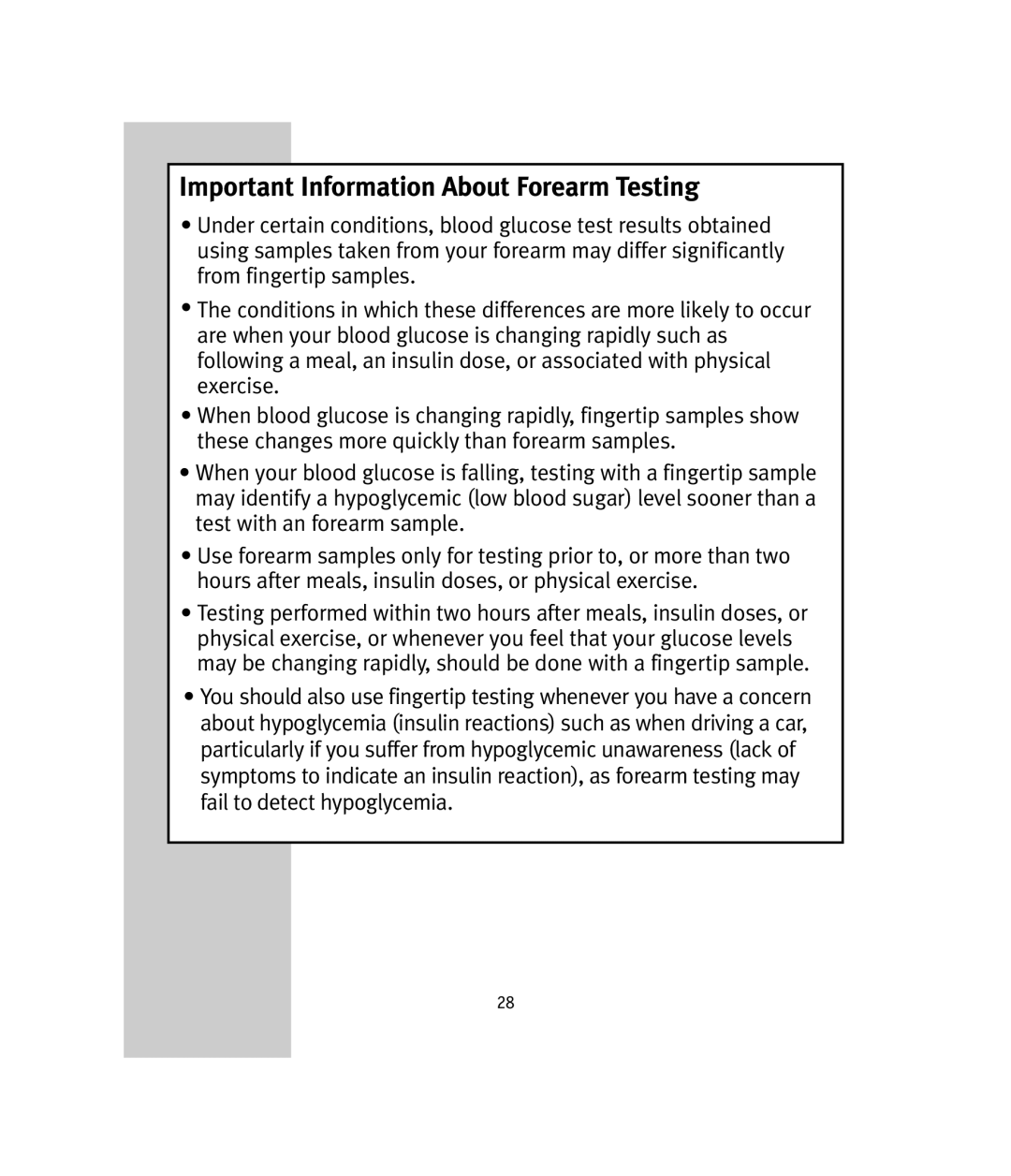
Important Information About Forearm Testing
•Under certain conditions, blood glucose test results obtained using samples taken from your forearm may differ significantly from fingertip samples.
•The conditions in which these differences are more likely to occur are when your blood glucose is changing rapidly such as following a meal, an insulin dose, or associated with physical exercise.
•When blood glucose is changing rapidly, fingertip samples show these changes more quickly than forearm samples.
•When your blood glucose is falling, testing with a fingertip sample may identify a hypoglycemic (low blood sugar) level sooner than a test with an forearm sample.
•Use forearm samples only for testing prior to, or more than two hours after meals, insulin doses, or physical exercise.
•Testing performed within two hours after meals, insulin doses, or physical exercise, or whenever you feel that your glucose levels may be changing rapidly, should be done with a fingertip sample.
•You should also use fingertip testing whenever you have a concern about hypoglycemia (insulin reactions) such as when driving a car, particularly if you suffer from hypoglycemic unawareness (lack of symptoms to indicate an insulin reaction), as forearm testing may fail to detect hypoglycemia.
28
